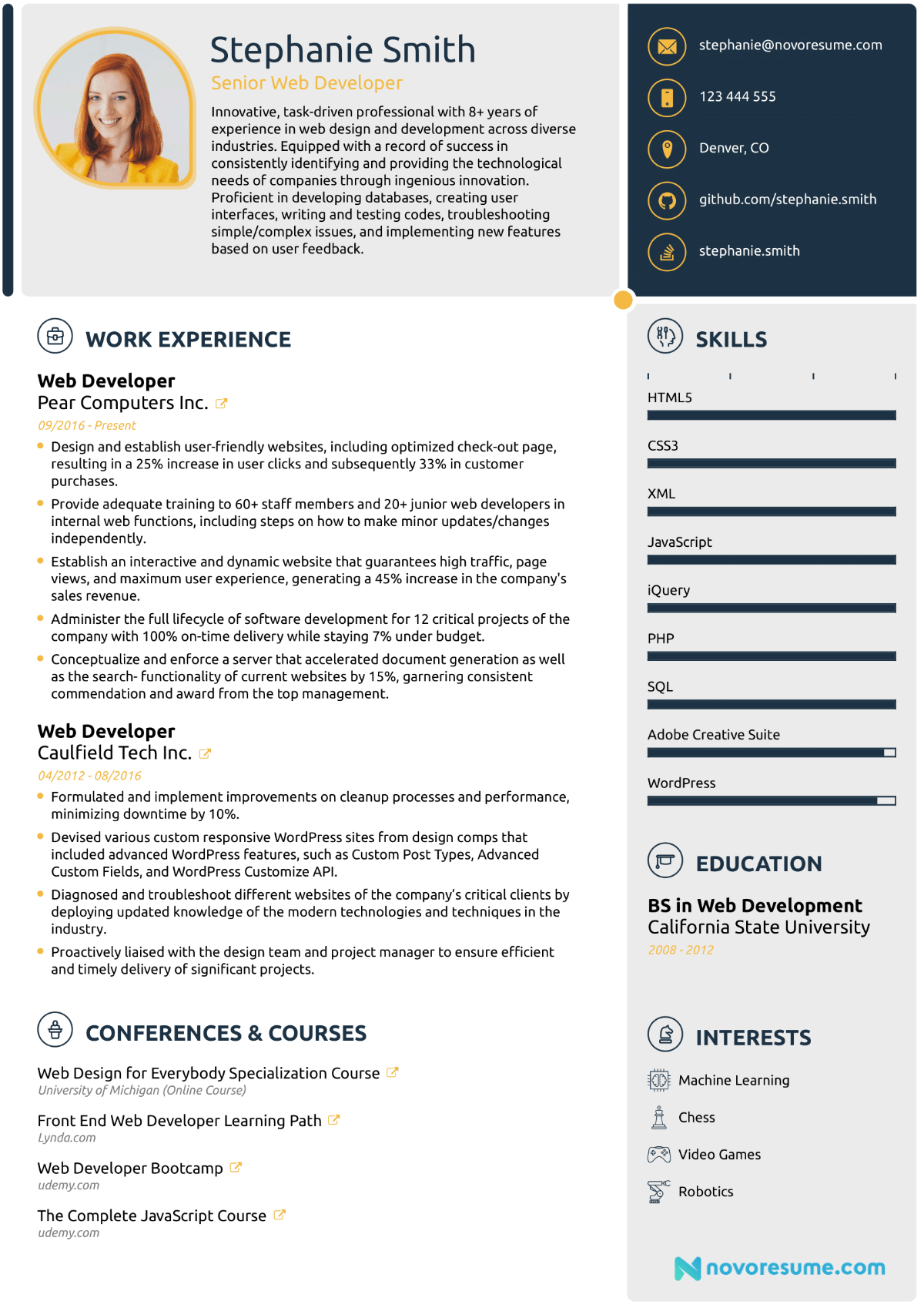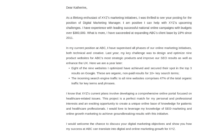So, you’re a web developer ready to take the next big leap in your career, perhaps eyeing that dream job at a cutting-edge tech company or a nimble startup. It’s an exciting journey, but before you dive into interviews and coding challenges, there’s one crucial step: perfecting your CV. Think of your CV not just as a document, but as your personal marketing tool, designed to showcase your unique skills, experience, and passion for building amazing things online. In a competitive field, a well-crafted CV is what gets your foot in the door.
Crafting a CV that truly stands out can feel like a daunting task, especially when you’re juggling code and continuous learning. That’s where a thoughtfully designed cv template for web developer roles comes in handy. It provides a structured framework, ensuring you don’t miss any vital information while also presenting your qualifications in a clear, compelling, and professional manner. Let’s explore what makes a web developer CV shine and how you can optimize yours to grab the attention of hiring managers.
Essential Sections For Your Web Developer CV
When putting together your web developer CV, think about what a recruiter or a technical lead truly wants to see. They’re looking for someone who can not only write code but also contribute meaningfully to a team and projects. Here’s a breakdown of the core sections you absolutely need, ensuring your CV communicates your value effectively.
First off, your Contact Information should be clear and concise right at the top. Include your full name, phone number, email address, and most importantly, links to your professional online presence. This means your LinkedIn profile, GitHub repository (showcasing your public projects), and personal portfolio website if you have one. These links are golden for a web developer, as they provide tangible proof of your skills.
Next, a powerful Professional Summary or Objective acts as your elevator pitch. This short paragraph, typically 3-5 sentences, should highlight your core expertise, years of experience, and what you’re looking to achieve. For instance, "A results-driven Full Stack Web Developer with 5+ years of experience in JavaScript frameworks (React, Node.js) and cloud platforms (AWS), seeking to build scalable web applications in a dynamic environment." Tailor this to each job description you apply for to immediately resonate with the hiring manager’s needs.

Showcasing Your Technical Prowess and Experience
The Technical Skills section is arguably the most critical for a web developer. This is where you list all the programming languages, frameworks, libraries, databases, tools, and platforms you are proficient in. Organize them logically – perhaps by frontend, backend, databases, DevOps, and so on. Be specific and include both foundational and specialized skills.
- Languages: JavaScript, Python, HTML5, CSS3, TypeScript, PHP, Ruby
- Frontend Frameworks/Libraries: React, Angular, Vue.js, jQuery, SASS, LESS
- Backend Frameworks/Runtimes: Node.js, Express.js, Django, Ruby on Rails, ASP.NET Core
- Databases: MongoDB, PostgreSQL, MySQL, SQL Server, Redis
- Tools & Platforms: Git, Docker, Kubernetes, AWS, Azure, Google Cloud Platform, Webpack, Babel
Your Work Experience section should detail your professional history in reverse chronological order. For each role, include your job title, company name, location, and dates of employment. More importantly, use bullet points to describe your responsibilities and, crucially, your achievements. Focus on quantifiable results whenever possible. Instead of just saying "Developed web applications," try "Developed and deployed a customer-facing portal that increased user engagement by 20% using React and Node.js." This shows impact and problem-solving skills.
Equally important are your Projects. Whether personal or professional, showcasing projects demonstrates your initiative, practical application of skills, and passion for development. Provide a brief description of each project, the technologies used, and a link to the live demo or GitHub repository. Finally, your Education should list your degrees, certifications, and any relevant coursework, usually at the bottom of the CV.
Optimizing Your CV For Maximum Impact
Creating a comprehensive CV is one thing, but optimizing it for the job market is another. A great cv template for web developer roles doesn’t just organize information; it presents it in a way that catches the eye and passes through Applicant Tracking Systems (ATS).
First, readability and formatting are paramount. Use a clean, professional font and maintain consistent formatting throughout. White space is your friend; don’t cram too much information onto a single page. Most recruiters spend only a few seconds scanning a CV, so it needs to be easily digestible. While creativity is appreciated in web development, keep your CV design professional and simple for initial screening. Ensure it’s ATS-friendly by using standard headings and avoiding complex graphics or embedded images that might not be parsed correctly.
Next, tailoring your CV for each application is non-negotiable. Look at the job description for keywords – specific programming languages, frameworks, or methodologies they mention. Integrate these keywords naturally into your skills section, professional summary, and experience descriptions. This significantly increases your chances of getting past the ATS and into a recruiter’s hands. For example, if a job emphasizes "RESTful APIs" and "microservices," make sure those terms appear in your CV if you have experience with them.
Always quantify your achievements. As mentioned before, numbers speak louder than words. Did you reduce load times? Improve database performance? Increase user retention? Use percentages, dollar figures, or specific metrics to highlight your contributions. This demonstrates not just what you did, but the positive impact you had.
Finally, proofread meticulously. A single typo or grammatical error can undermine your professionalism. Read your CV multiple times, and if possible, have a trusted friend or colleague review it. After all that hard work, you want your CV to reflect your attention to detail. Always save and send your CV as a PDF to preserve formatting across different systems.
A well-structured and compelling CV is your first, and often most critical, step toward landing your next web development role. By focusing on clarity, impact, and tailoring your content to each specific opportunity, you’re not just listing your qualifications; you’re telling a powerful story about your capabilities and what you can bring to a team. This strategic approach will undoubtedly elevate your job search and help you secure the interviews you truly desire.
